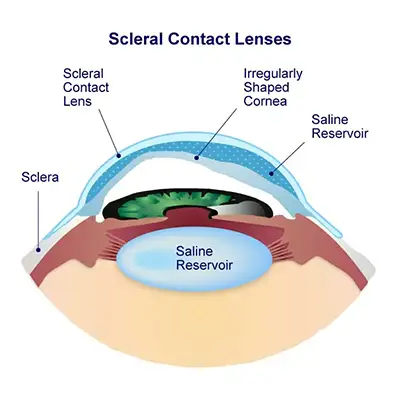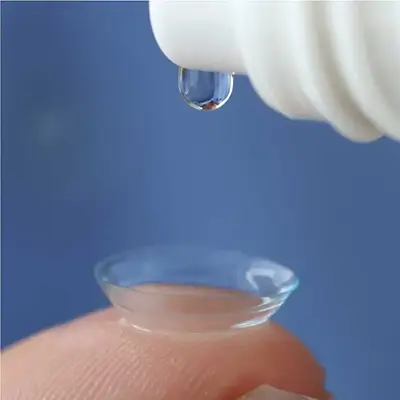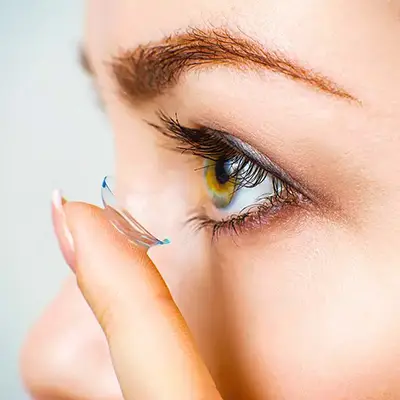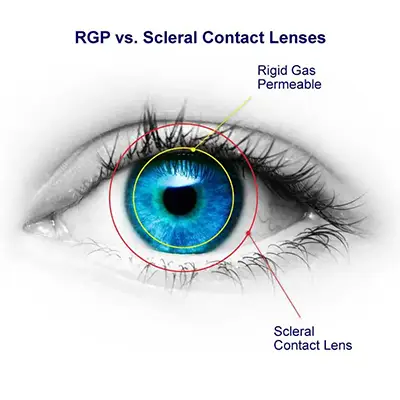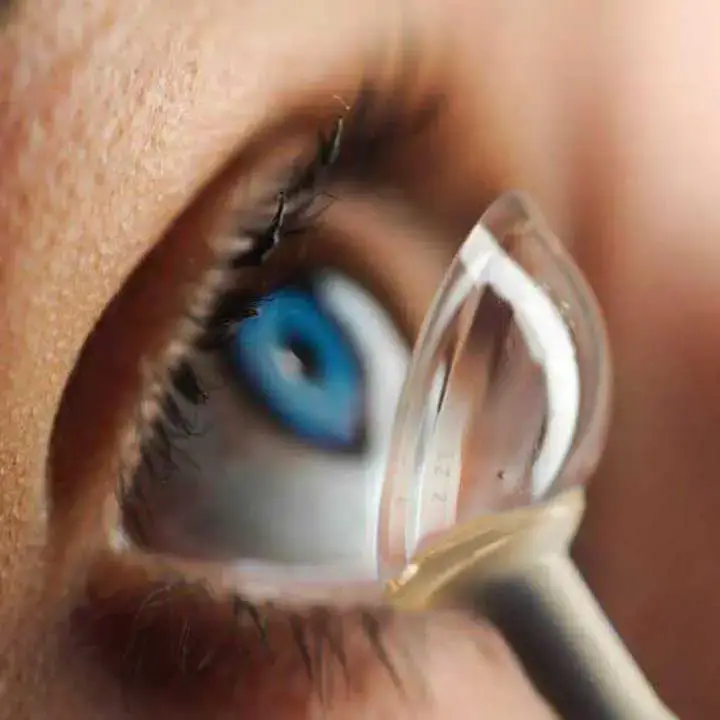
Custom-Fitted Scleral Contact Lenses in Edmonton
Have you been informed in the past that you are not a candidate for contact lenses, or that you cannot wear contact lenses because of an irregular cornea, dry eye syndrome, or another issue? If so, you may want to consider pursuing scleral contact lenses. They are a customizable lens that can be worn by a greater number of individuals. Specialty scleral contact lenses can provide you with the freedom you desire and the clarity you deserve and need. Contact our Edmonton optometrists for a scleral contact lens consultation today!
Schedule An Exam Our Optometrists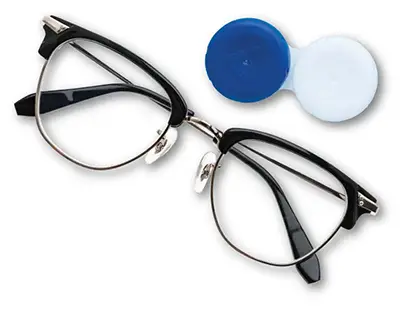
(780) 473-6123
Specialized Contact Lenses in Edmonton.
Scleral Contact Lenses: What Are They?
Scleral contact lenses are large-diameter gas permeable contact lenses specially designed to span the entire corneal surface and rest on the "white" portion of the eye (i.e., the sclera). The result is that the scleral lenses functionally replace the irregular cornea with a perfectly smooth optical surface to correct vision problems caused by keratoconus or other corneal irregularities. The gap formed between the cornea and back surface of a scleral lens becomes a reservoir for a saline solution that provides comfort for people with severe dry eyes, who otherwise could not tolerate contact lens wear.
Schedule A Scleral Contact Lens FittingWhat is Keratoconus?
Keratoconus (ker-uh-toe-KOH-nus) is an eye condition in which your cornea — the clear, dome-shaped front of your eye — gets thinner and gradually bulges outward into a cone shape. A cone-shaped cornea causes blurred vision, may cause increased sensitivity to light and glare, and challenges achieving clear vision and comfort with traditional contact lenses.
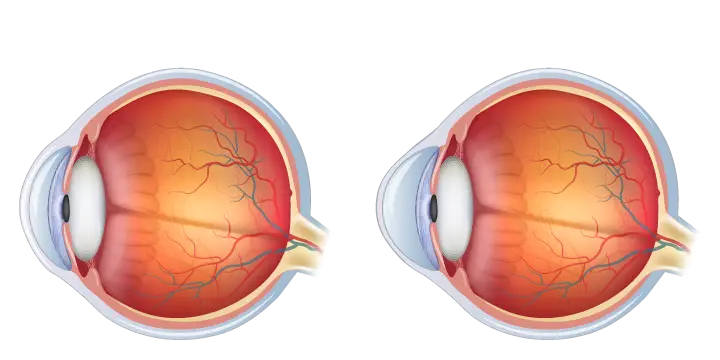
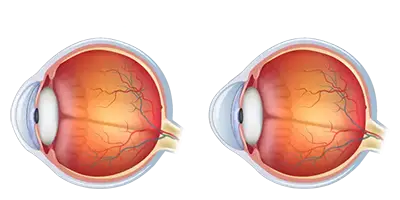
Custom Contact Lenses in Edmonton.
Am I A Candidate For Scleral Contact Lenses?
In general, anyone seeking the best vision possible with contact lenses is a candidate for scleral lenses. However, scleral gas permeable contact lenses are particularly advantageous to individuals with the following conditions:
When the cornea has an irregular shape, either due to a natural cause, an eye condition such as keratoconus, or is the result of eye surgery, vision often cannot be fully corrected with eyeglasses or soft contact lenses. In such cases, scleral lenses can provide sharper vision.
If traditional gas permeable contact lenses cannot be comfortably fitted on your eyes, or the shape of your eyes makes it easy for the lenses to becomed dislodged during sports activities, scleral lenses can offer a more secure and comfortable fit.
If dry eye syndrome prevents you from wearing conventional contact lenses, scleral lenses may be the solution. The saline reservoir between the back surface of scleral lenses and the cornea serves as a tear reservoir, which helps keep the front of your eye more moist and comfortable.
Schedule A Scleral Contact Lens FittingSee Your Best With Scleral Lenses.
Benefits of Scleral Contact Lenses
Benefits of scleral contact lenses include:
- Cone-shaped corneas cannot be properly corrected using eyeglasses or conventional contact lenses. Larger scleral contact lenses sit on the sclera, rather than the cornea, to provide clear and comfortable vision.
- Irregularly shaped corneas (i.e., naturally or resulting for surgery) challenge clear vision with glasses or traditional contact lenses. Scleral contacts provide secure, comfortable and clear vision.
- The saline reservoir between lens and cornea serves as a tear reservoir to provide conistent moisture and relief from dry eye symptoms.
- The large size of scleral lenses keeps them centered and secure on the eye, providing consistent, stable vision.
- The large diameter of scleral lenses offers a wider optical zone that provides enhanced peripheral vision.
- Covering a larger portion of the eye, scleral contacts offer greater protection from dust, debris, allergens, etc.
- As a RGP contact lens, sclerals are made to last.
- With greater durability and longer lifespans than standard contact lenses, scleral contacts are a cost effective option, even when accounting for their unique fitting fees.
Custom Scleral Contact Lenses in Edmonton.
Scleral Contact Lenses: Types & Uses
Scleral contacts are comparatively larger than standard gas permeable (GP) contact lenses (and soft contact lenses - See Scleral vs. Soft Contact Lenses) and have a diameter equal to or greater than soft contact lenses. With the average cornea being approximately 11.8 millimetres in diameter, even small scleral contact lenses cover the entire corneal surface. Corneo-scleral lenses often are a good choice for people who require larger-than-normal GP lenses for greater comfort. They also are frequently used when contact lenses are needed following corneal refractive surgery to correct irregular astigmatism. Larger scleral lenses are great for conditions such as keratoconus, chronic dry eyes, and severe ocular surface disease that may benefit from a large tear reservoir. That is because the gap created between scleral lens and cornea would have a greater capacity to hold fluid (i.e., saline) and span large corneal variances (i.e., peaks and valleys).
Schedule A Scleral Contact Lens Fitting
Personalized Contact Lenses.
Scleral Contact Lenses: What To Expect.
Scleral contact lenses are tailor-made for each patient. Accordingly, fitting scleral contacts requires greater expertise, technology (i.e., corneal topographer) and more time than fitting standard soft or gas permeable contact lenses. Also, because scleral contact lenses are a precision product, adjustments to lens parameters may be needed and addtional be made and exchanged. The complete fitting process can require several visits to determine the optimal lens for both eyes. Mastering inserting and removing scleral lenses may also take some practice, even for experienced contact lens wearers. This is due to the larger lens size and the need to maintain a fluid reservoir under the lenses. Because of the expertise needed to fit and manufacture scleral lenses, costs are noteably greater than compared to fitting soft or GP contact lenses. However, with proper care and a stable prescription, scleral contact lenses can last up to 2 years.
Schedule A Scleral Contact Lens Consult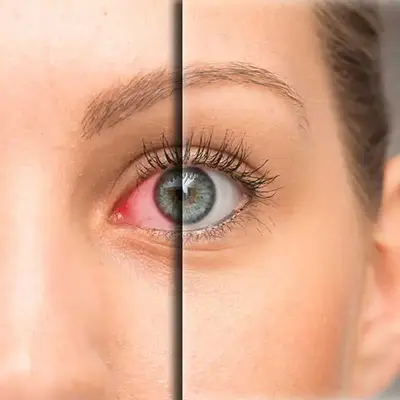
Dry Eye Treatment
See relief from the dry eye symptoms of burning eyes, scratchiness, pain and redness with personalized eye care from our Edmonton optometrists.
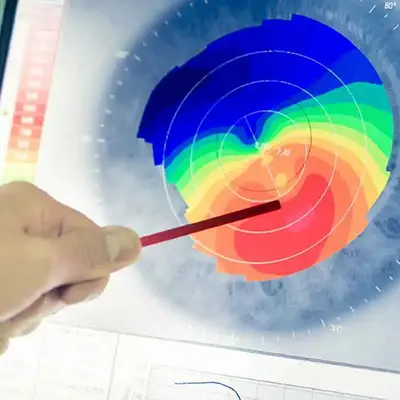
Contact Lens Fittings
Proper contact lens fit is essential for comfort and eye health. Visit our experienced Edmonton optometrists for a personalized contact lens fitting.
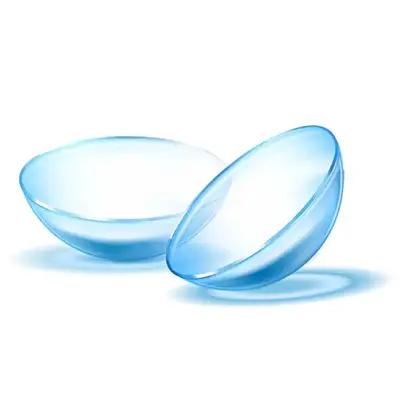
Contact Lens eStore
Conveniently and easily replenish your inventory of contact lenses online from trusted Edmonton eye doctor through our Contact Lens eStore.
FYEyes Blog Posts

Why Scleral Lenses Cost More
Discover why scleral contact lenses cost more than traditional contacts and why they're worth the investment.
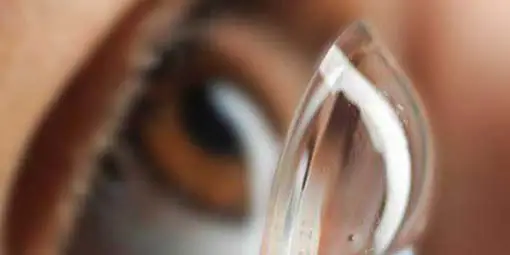
The Cost of Scleral Contact Lenses
There are different types of scleral contact lenses. Learn more about the average price point.

The Scleral Fitting Process
Scleral contact lenses are custom-designed for each patient, making the fitting process more detailed and specialized.
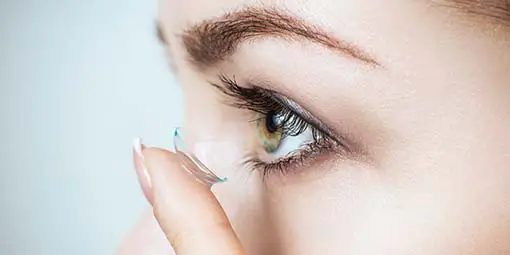
Reasons To Consider Scleral Contact Lenses
Scleral contact lenses offer numerous benefits. Learn more about how they could be a great option for you and your vision today!
Scleral Contact Lenses FAQs

Our Edmonton Optometrists
Searching for an optometrist in Edmonton? Our experienced Edmonton eye doctors use advanced modern technologies and devote upwards of 500% more time towards providing personalized patient care than elsewhere so that they can see more and ensure that you may never see less. Position yourself to see the future with a visit to our eye clinic and Edmonton's best eye care!

Dr. Jennifer Ash, OD
Dr. Jennifer Ash is the Resident Optometrist at Eye-deology Vision Care. Dr. Ash provides patient care 5 days a week. Read more about Dr. Ash.

Dr. Ruhee Kurji, OD
Dr. Ruhee Kurji is an Associate Optometrist at Eye-deology Vision Care. Dr. Kurji provides patient care Tuesdays & Fridays. Read more about Dr. Kurji.

Dr. Jade McLachlin, OD
Dr. Jade McLachlin is an Associate Optometrist at Eye-deology Vision Care. Dr. McLachlin provides patient care 5 days a week. Read more about Dr. McLachlin.

Dr. Tania Mathews, OD
Dr. Tania Mathews is an Associate Optometrist at Eye-deology Vision Care. Dr. Mathews provides patient care 2 days a week. Read more about Dr. Mathews.
Learn Why Our Edmonton Optometrists Are The Best!



